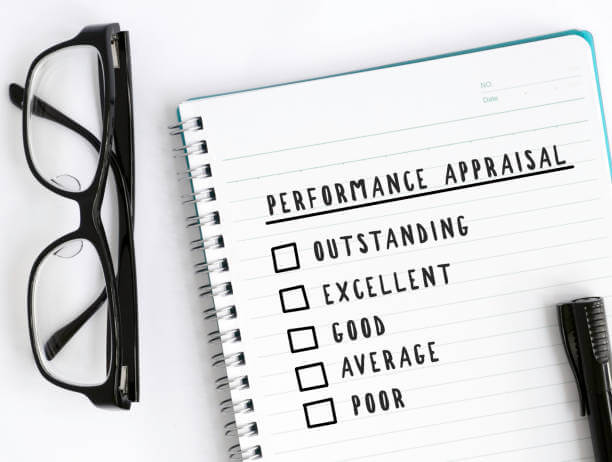At Simply Contact, we specialize in creating personalized customer support solutions that drive business growth and customer satisfaction. Let us help you elevate your customer experience and stand out from the competition.

In 2020, the global customer service market capitalization reached $7.6 billion.

These are quite impressive numbers that easily demonstrate how important high-quality customer interaction is. Let’s discuss the most important customer service metrics to help you build the right business strategy and eliminate the gaps in what you are already practicing.
Why define KPI in terms of customer service?
Originally, KPIs were used to control the financial turnover in the company. After all, a thorough sales analysis allowed businesses to save substantial sums every month. Nevertheless, suppose you understand the basic principles of calculating KPIs. In that case, these metrics can find their application not only in sales but also in many other areas, particularly in assessing customer service quality.
The main question is not which businesses should use which KPIs, but how to set customer service KPIs individually, based on your company workflow. Using customer service KPIs in the long term provides companies with solid advantages because tracking development dynamics in large volumes is quite difficult.
Namely, by giving KPIs a fair share of analysis and processing, you get to:
- Create better business plans, sales forecasts, and strategies;
- Assess the in-house performance;
- Indicate and solve business issues;
- Optimize business processes.
Generally speaking, KPIs in customer services measure quantitative rather than qualitative performance. That’s why it is rather difficult to extrapolate the standard formulas for calculating KPI metrics, especially in the context of assessing the quality of interaction between company employees and customers. However, some world-renowned financial experts have managed to do this.
Before discussing the most essential customer service KPIs, let’s consider the importance of a high level of service.
Why is high-quality customer service so fundamental?
When reviewing the most prominent KPIs for customer service examples, it’s best to know from the start why you should pay attention to them.
Cost-efficiency
When mystery shopping became a common quality assurance method, video surveillance systems were expensive, and labor was cheap. In our time, on the contrary, labor is expensive, and technical means are cheap. Investing in the right people pays off. In turn, calculating service quality metrics helps to understand how properly and cost-worthy these employees perform.
Higher performance
As you may know, keeping an old customer is much cheaper than getting a new one. This is why managing to avoid customer dissatisfaction is so important. Calculating service quality assessment metrics helps objectively assess the quality of interaction between your employees and your customers at an early stage.
Fast assessment
Some KPI metrics allow you to assess the effectiveness of the practice of working with customers at minimal time intervals, which means that problems can be eliminated before they cause serious damage to the company's reputation.
No workflow intrusions
It is a well-known fact that company staff is really put off by excessive top management control. Neutral tracking of KPI metrics will be the right choice. This will allow you to determine the reasons for customer dissatisfaction, be it improper staff work or force majeure situations. At the same time, you will avoid demotivating staff.
Call center key performance indicators

Let’s take a look at the major call center key performance indicators.
First call resolution (FCR)
Greeting the customer is a key part of measuring KPI for customer service. Agents should speak clearly, represent themselves and the company in the most pleasant light, and make the receiving end feel important.
Define a script that is adaptable to different situations. Your customer support department employees will be able to use the script independently. Their ability to stick to the script will enable you to analyze how well they perform the task assigned and support the company's image.
Response time
An important customer service KPI example is the average response time, measured from when the call is initiated to when the agent answers. This indicator should be taken into account when assessing the performance of employees, as it is the main reason customers complain. By responding quickly, you show that you value your customers' time.
The value of this indicator is used in two metrics:
- the employee workload rating (how productively they work with customers);
- the workflow engagement rating.
Knowledge of products and services
Among the crucial KPIs for customer service staff is the assessment of your employees’ level of in-house education (i.e., knowledge of services and/or products provided by the company). In case they look insufficiently competent, customers may find your company insufficiently reliable and certainly not capable of solving their problems.
This is why many companies regularly conduct certification for their employees. If the grades are low, then it is worth training your staff better.
Tone and voice
Yet another customer service performance measure example implies that the support staff in your company should be not only literate but also well-mannered. Obviously, customers are unlikely to enjoy the frivolous manner of speech of the service staff, ignoring their requests and the lack of some formalities defining the chain of command. That’s why each of your employees should have well-organized speech and communication manners.
Employee’s eagerness to help
Customers want their problems discussed and solved as quickly as possible. Therefore, according to certain scripts, each of your employees should take the initiative and respond as quickly as possible to customer problems.
Speed of passing customers on
It often happens that a manager doesn’t know how to solve a problem and knows that their colleague is more qualified to process a specific customer request. This is a normal occurrence. However, if this happens too often, you should educate your employees better.
Call length
Your operators must answer calls quickly and efficiently. The more calls they can handle smoothly and well-paced, the more customers they can help. Determine the average amount of call time per department to see how productive your team is.
Processed requests
Another important metric for the customer service KPI is the number of requests processed. It determines the total volume of submissions that the employee managed to take under control within a certain time period. This also includes requests that he/she closed or deleted without a response.
Tasks completed by the priority
The task of the technical support manager is to resolve the issue with which the user addresses them. The number of solved problems is all dialogs that ended with the user getting a proper solution. This customer service KPI can be counted in the number of tasks solved, or you can track the dynamics of each type of task by priority. It can also be calculated as a percentage of processed tasks to the number of requests.
Overdue responses
Overdue responses may also deprive an employee of bonuses. In particular, operators are obliged to fulfill the promises made to the caller regarding the waiting time, etc. After all, if the caller doesn’t like the service, the company can permanently lose their loyalty, which may provoke a decline in sales in the future.
Customer service managers are responsible for timely responses. That’s why companies should track the number of overdue reports, counting the percentage of their total number compared to the total number of requests.
Average employee performance

To evaluate employees' work, you can contact customers with a request for feedback. This is the direct way to find out how well the employee helped the caller. A bonus or a promotion may motivate maintaining a high threshold for average performance.
Customer turnover
One of the most important metrics is the customer turnover rate. It determines the objective reasons why customers stopped using your services. Calculating this indicator is extremely simple: by the number of applications for a certain time period from existing customers of the company.
Best support workers
Assessing your employees' overall performance is an important part of organizing workflow. Monitoring customer service performance metrics, such as the average number of processed calls per hour, will help you assess the call center staff's performance individually. Thus, you will find out who is more capable and who needs extra training.
But don’t jump to conclusions. Your employee may encounter problem customers who negatively evaluate professional work for subjective reasons.
Customer satisfaction
The customer satisfaction rate is a very important indicator of the quality of customer service. Obviously, you cannot be precisely aware of all the problems your customers face, so you will need to use some additional tools to evaluate. For example, you can create a separate mailbox where your customers will send their feedback.
Customer experience
Another indicator of customer support is how easy it is for customers to get what they came to your company for. In particular, you need to keep their effort score low so that customers don't complain about the difficulty of using your services.
This is very important because they may opt-out of partnering with you in favor of a competitor with a less complicated approach to callers.
Requests handled solo
Such requests are resolved by a single operator without any additional assistance or guidance. This helps to increase the employee's KPI, making it clear how competent he/she is in performing the assigned tasks.
Customer loyalty
The customer loyalty Index is a measure of customer loyalty calculated by multiplying positive ratings by the share of negative ratings (for example, a positive assessment of a company's service level is when a client would unconditionally recommend your company to their friends).
Optimizing these key performance indicators for customer service will significantly reduce costs, and you will also be able to reallocate business development finances to more important things.
Customer dissatisfaction with work organization
This characteristic determines how inviting your office is in the customer's eyes. At the same time, the number of negative assessments is calculated in response to the question of whether customers like the office's environment and organization.
Maintenance costs
One essential business goal is to ensure high-quality work processes at the lowest cost. That’s why you should train your employees well, create the optimal staff schedule, and then compare the costs of supporting your customers in relation to your total income. This is one of the most important accounts receivable (AR) KPIs.
Canceled requests
Lastly, one of the customer support metrics helps optimize the company's revenue level. It helps you understand how much you have lost from existing customers due to canceled orders and requests.
How to boost customer service KPIs via outsourcing?
Creating a system of KPI indicators and their control over certain time intervals is the key to successfully launching a new project, reaching the target values of customer indicators, and maximizing the project's profitability.
Here are the factors and circumstances that determine the need to implement such systems:
- incoming, outgoing line, order/appeal support;
- outsourcing or hidden outstaffing initiatives;
- SLA-defined customer experience metrics;
- penalties for not meeting certain success criteria;
- optimization of CRM and request processing software;
- in-depth reporting.
You can hire a separate outsourcing team for top-notch customer service, just make sure the contractor is competent in the following aspects:
- an understanding of your software database architecture;
- setting up a permanent process for unloading data from your software;
- using your software's reporting system, which measures indicators for which penalties can be applied;
- creation of operational reporting systems;
- experience in using BI systems (power bi, Qlik).
The work of such a third-party team should result in boosting the following metrics:
- AR;
- SLA;
- customer satisfaction rating;
- request processing rating;
- CRM system filling quality;
- FCR;
- extra sales;
- extra costs.
Customer service KPI: Bottom line
In terms of customer service, all the above KPI metrics can be used to:
- study the efficiency of performance in the staff and company as a whole;
- form a staff of the most efficient workers;
- motivate individual employees with bonuses.
However, incorporating the KPI into existing workflows is challenging. Don't really want to bother with this? Our excellent solution is a contact center that will cooperate with you remotely. We select the best employees who will take the quality of service in your company to a new level and help win an ultimate loyal attitude of customers.
Don't waste another minute - contact us right now to discuss our cooperation's specifics.
Get fast answers to any remaining questions
Thank you.
Your request has been sent successfully.
Your request has been sent successfully.



